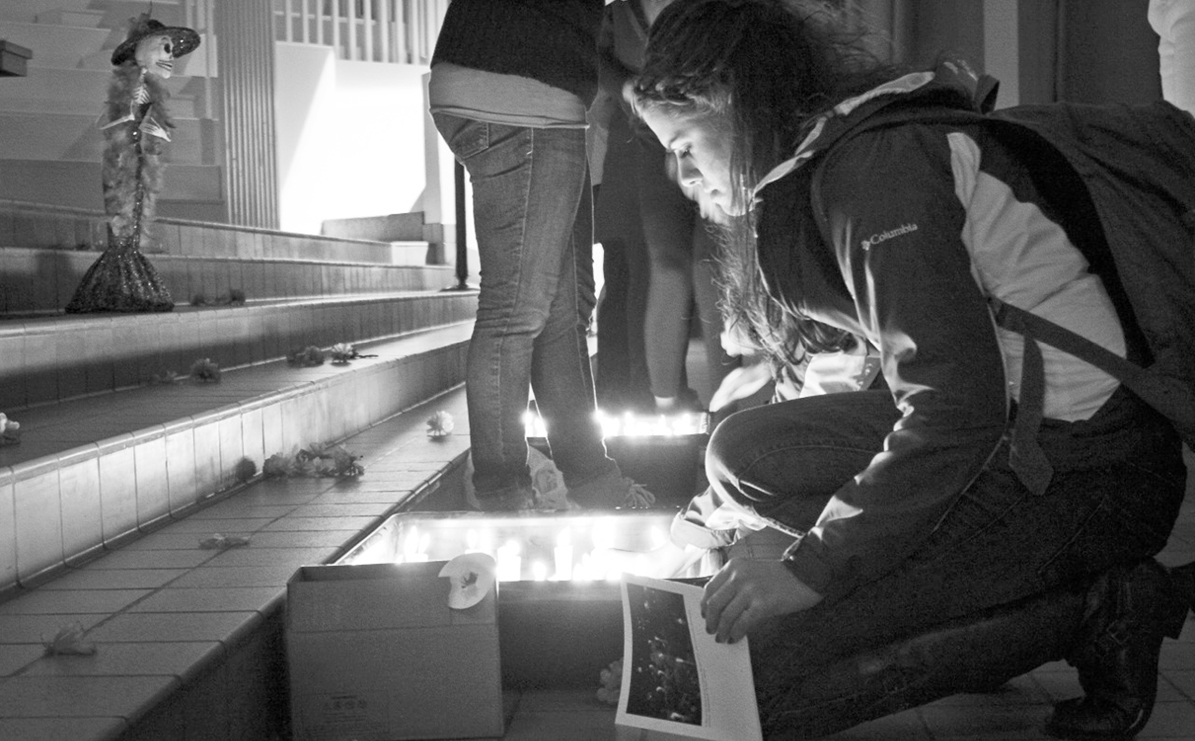Dia de los Muertos, or Day of the Dead, is a celebration held every year on Nov. 1. It is a day that honors the souls of deceased loved ones who, some cultures believe, are welcomed back for the night.
The tradition originated in Mexico and is also celebrated in parts of the United States and Central America. In parts of rural Mexico, people spend the night at cemeteries and decorate the graves of loved ones with flowers, toys, candles, pictures and food. Larger cities in Mexico celebrate by building altars and decorating them. It is tradition to take the loved one’s favorite food to the grave or altar so that when they return for the night they can enjoy it. Altars can be found in homes, schools and libraries.
The Day of the Dead celebration has been going on for many years at Gustavus. Former faculty member Gaston Alzate organized the celebration for more than two decades. When he left it stopped, but it has been brought back for the last three years by Assistant Professor of Spanish and LALACS Angelique Dwyer.
The ceremony had a very formal setting this year. It started outside the Evelyn Young Dining Room and processed to Christ Chapel. Chaplain Rachel Larson, accompanied by flutist Nikki Rom, led the singing procession. Once inside the Chapel, Chaplain Larson greeted the students, families and community members attending the service.
“It was really amazing to see all the different people and ages,” Dwyer said.
Soloist Nikki Rom and violinist Antonio Herbert performed two musical selections.
“It was a very moving experience to be a part of another culture, to experience it first hand and not just look it up. I was touched by the singing and how devoted the people were,” Herbert said, recalling the experience.
After the musical selections there was time for reflection, a reading and petitions. Petitions were prayers written on notecards that were placed in the pews when people came in to sit down. They were written to those who had passed.
“Some were very personal.People write them in the moment and someone else reads it, so it is completely anonymous. It was a way of sharing with the community,” Dwyer said.
The petitions were collected, some of them posted on the walls around the chapel. A few of the most profound, meaningful ones were read aloud in both Spanish and English.
“They were really heartfelt, it was hard to listen to. I could feel a knot welling in my throat,” Dwyer said.
The service ended with the Lord’s Prayer and some closing remarks. People were invited to stay and look at the displays of altars, calaveras (sugar skulls) and prayer petitions. Pastries were also served.
“There were so many pastries,” Herbert said. “There were churros; some were baked in the shape of little people,” Herbert said.
The sugar skulls are a way of allowing children to interact with the celebration. The skulls are a way to “laugh with death, accepting the inevitable truth of life and death,” Dwyer said.
There are also poems written called “skulls.” The poems are supposed to be ironic and funny, to “taunt death.”
A lot of work goes into putting on the Day of the Dead celebration. There were many activities going on throughout the week in order to prepare for the event. On Monday, community members came to decorate sugar skulls. This event was sponsored by OLAS (Organization of Latin American, Latino, and Spanish Cultures) and Language Amiguitos group. On Tuesday, Zeta Chi Phi put on an event to paint the crosses for the cross display outside the Chapel. MOSAIC helped with the candles, Spanish Club decorated the altar outside the Cafeteria, Musical B.A.R. helped with the music for the ceremony and the Chaplain’s Office created the programs. Language Buddies helped get the community involved in the event. Dwyer’s goal is to get as much student involvement from as many organizations as possible.
“It’d be really cool to see students fully run [the ceremony] in conjunction with the community [in the future],” Dwyer said.
